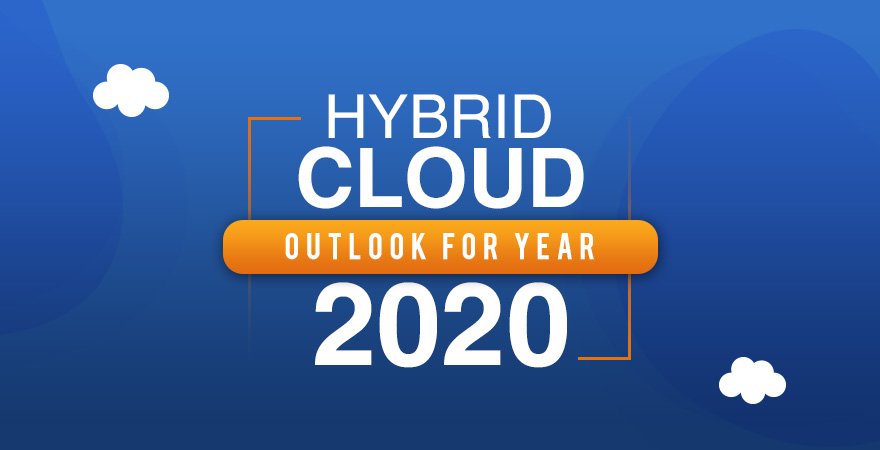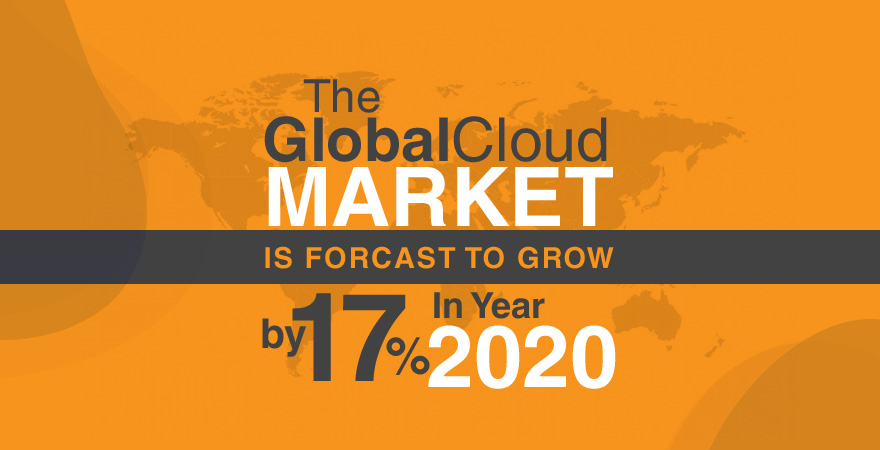2020 does not just mark the beginning of a new year, but also a new decade. Despite all odds and looming concerns around the health of global economy, the IT industry in general and cloud computing in particular still maintain a growth posture.

The global spending on IT is expected to range between $3.75-4.00 Trillion, which marks a modest increase of 3.2% annually. Although this is not a sizeable increase in percentage terms, it is significant in the backdrop that IT spending was feared to decline this year.
Also Read:
- Recap of Cloud Computing in 2019 and Outlook for 2020
- dinCloud’s Public, Colo, Private & Hybrid Offerings
- Cloud Orchestration & Management Platform by dinCloud – dinManage
- 3 Things Every Small Business Can Do With Hybrid BPM and RPA
- Why Multi Cloud Computing Is Better Than Hybrid Cloud Computing?
Outlook for the global cloud industry is more promising as compared to the IT industry as a whole. The global cloud market is forecast to grow by 17% in year 2020, reaching a size of about $266 Billion. Within the cloud domain, hybrid solutions are expected to take the center stage.

In this post, we will try to highlight some of the leading trends in hybrid cloud architectures for the year 2020.
Containerization Takes a Hit
The Concept of Containerized Applications gained a lot of traction soon after it was introduced to Cloud Based Architectures. The inherent ability of containerized apps to share common resources made them a very viable deployment option.
However, containers are inherently complex to program, integrate and maintain. If we compare the complexity of containerized solutions with the integration solutions offered by large Cloud Service Providers (CSP), the latter are way less complex and cumbersome.
We can expect the trend of containerization to be gradually substituted by CSP delivered application integration solutions. Platform as a Service or PaaS will be the appropriate replacement for the highly complex containerized architectures. Cloud Tenants will leverage this platform to develop customized enterprise solutions.
The New Cloud Landscape
In the near future, cloud architectures will be comprised of hybrid and multi cloud deployments. What this means for Cloud Service Providers (CSP) is that lines between various CSPs will virtually disappear. This new cloud landscape is being drawn by none other than cloud tenants.
Also Read:
- UAE at the Brink of a Major Cloud Revolution [2020]
- Top 10 Cloud Computing Trends and Outlook for 2020
- 8 Reasons: Why Cloud Computing For Small Business?
Gone are the days when the entire workload was the sole domain of any single CSP. Now, CSPs will have to accept and adapt to the era of multi cloud architectures. In this environment, storage may be sourced from one CSP while computing duties may be outsourced to another CSP.
This will shift the priorities of CSPs from competing with another to developing management solutions for cloud solutions sourced from different CSPs. The service provider whose integration solutions would be the most intuitive and effective would enjoy a competitive edge in the market.
Expanding Global Footprint
As CSPs become more centralized in their cloud based offerings, their overall global footprint is geared towards a more localized approach. All major CSPs are investing heavily in expanding their data center and other cloud infrastructure footprint throughout the globe.

Each CSP has clearly defined its expansion strategy with primary focus on new emerging markets. Another major reason for this approach is the relative saturation that is rapidly catching up with the already developed cloud markets.
One more reason that is strongly contributing to this localized approach is stronger regulation around data management. With every passing day, the regulations around data collection, management and storage are getting stronger.
In a bid to implement and enforce these much stringent data management regulations, cloud tenants are becoming more marginalized when selecting CSPs. A localized approach to data center establishment goes a long way in complying with growingly stringent data regulations.
Establishing a widely dispersed infrastructure footprint also sets up CSPs well for tapping new cloud tenants in relatively developing markets. The more localized a CSP’s data center, the more comfortable prospective cloud tenants would feel in transitioning to the cloud.
We should see major investments by CSPs to set up data centers in entirely new markets. Secondly, in highly saturated markets, we may see a similar trend in order to gear up for late adopters of the cloud and tenants who want to increase their reliance on cloud based solutions.
Hybrid Cloud Will Thrive
A hybrid cloud deployment is characterized by some organizational functions being performed on premise while others outsourced to a cloud service provider (CSP). We can consider the hybrid cloud as a sweet spot between the two extremes.
Related: Business Continuity vs. Disaster Recovery
On one hand, organizations want to relieve themselves from the costly prospect of procuring and managing an elaborate IT infrastructure on premise. In addition to the exorbitant managing costs, there is the added factor of the rapid obsolescence rate associated with IT hardware.
Related: Why you need Cloud Business Continuity and Disaster Recovery
However, organizations also do not feel comfortable with entrusting their business critical data or applications over the cloud infrastructure. Some concerns are related to data security, while others pertain to business continuity. A hybrid cloud deployment greatly allays both concerns to a good extent.
Going into 2020, we should see an even stronger trend of hybrid cloud based solutions. Organizations will migrate relatively lower business critical workloads to the cloud, while maintaining the critical workloads on premise. Once this arrangement fares well, the reliance on the cloud will increase gradually.
Related:
Cloud Native Software
The companies that specialize in enterprise software have also come to embrace the cloud in an aggressive manner. Previously, there was sizeable gap between cloud solutions and enterprise software. This gap is now being bridged at a very strong pace.
Entities that develop enterprise solutions are rapidly adapting their offerings to become cloud native. Productivity solutions that are seamlessly integrated into the cloud will go a long way in ensuring the future sustainability and adoption of cloud based solutions.
This is yet another area where the hybrid cloud comes in really handy. Under development software can be seamlessly tested and debugged over the cloud infrastructure, while the on premise software solution does not let the normal course of business get disrupted in any way.
We should see a lot more variants of established software solutions become fully integrated with the cloud. In the meantime, no business critical process is affected during this testing, integration and troubleshooting phases of a software solution in production


